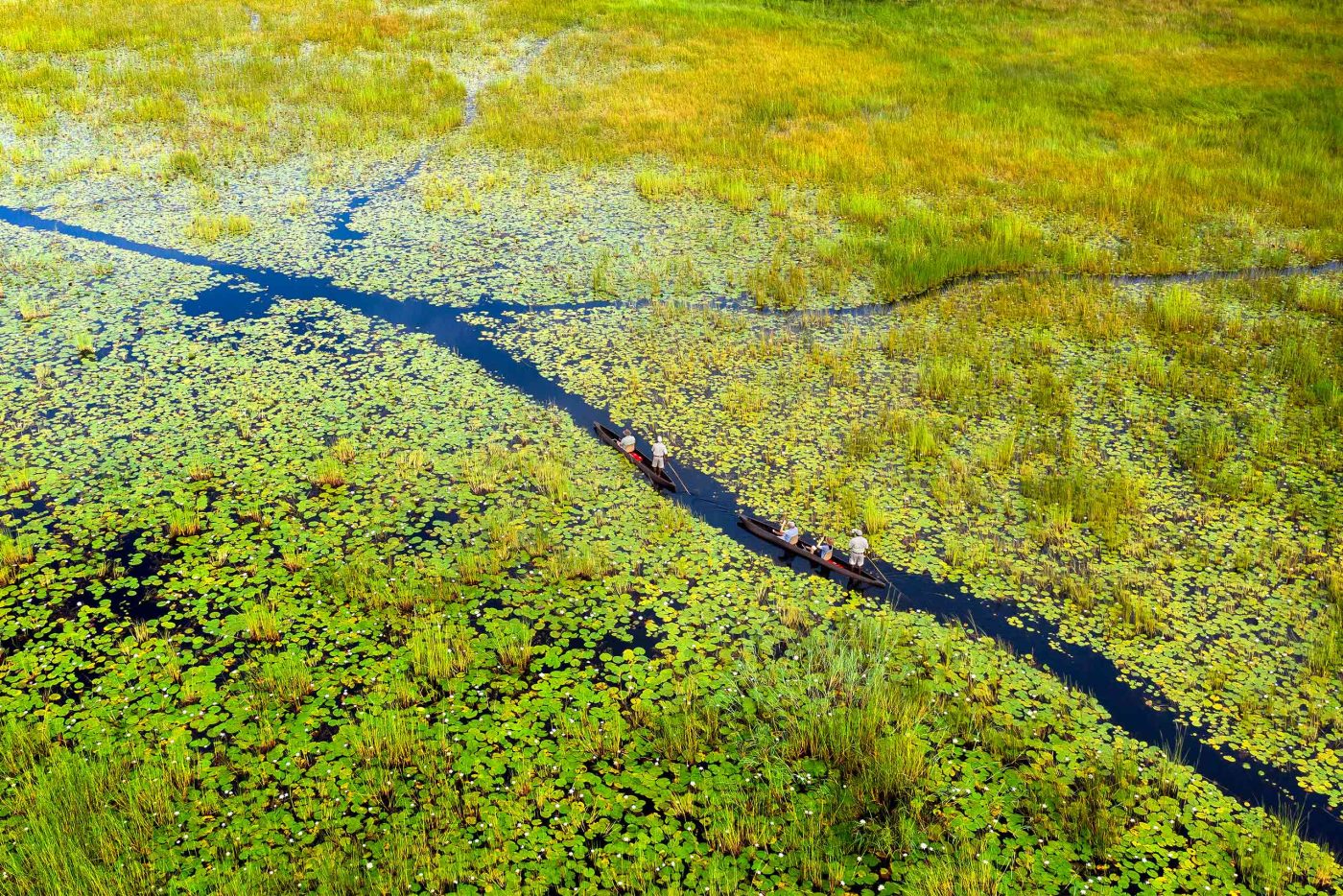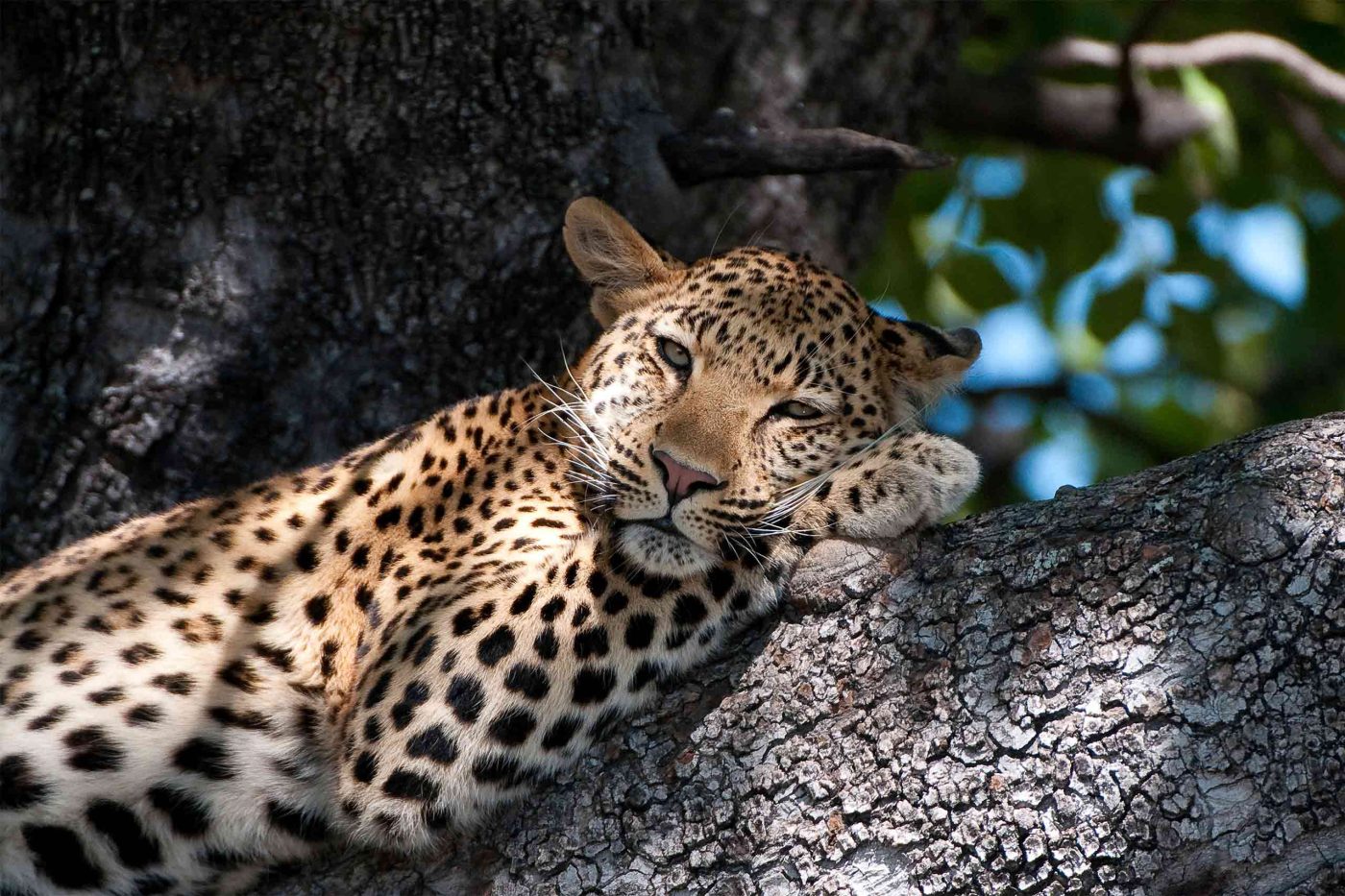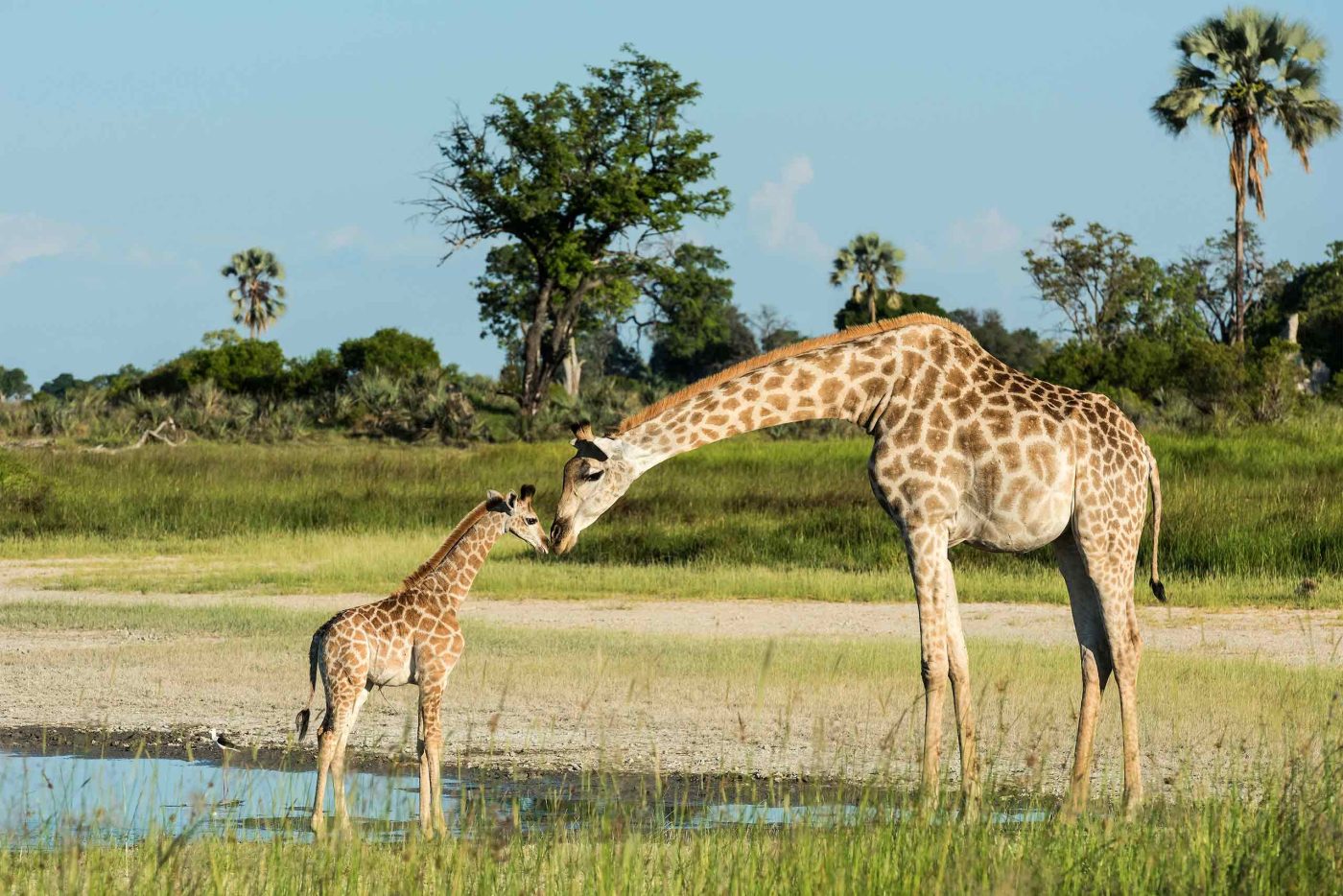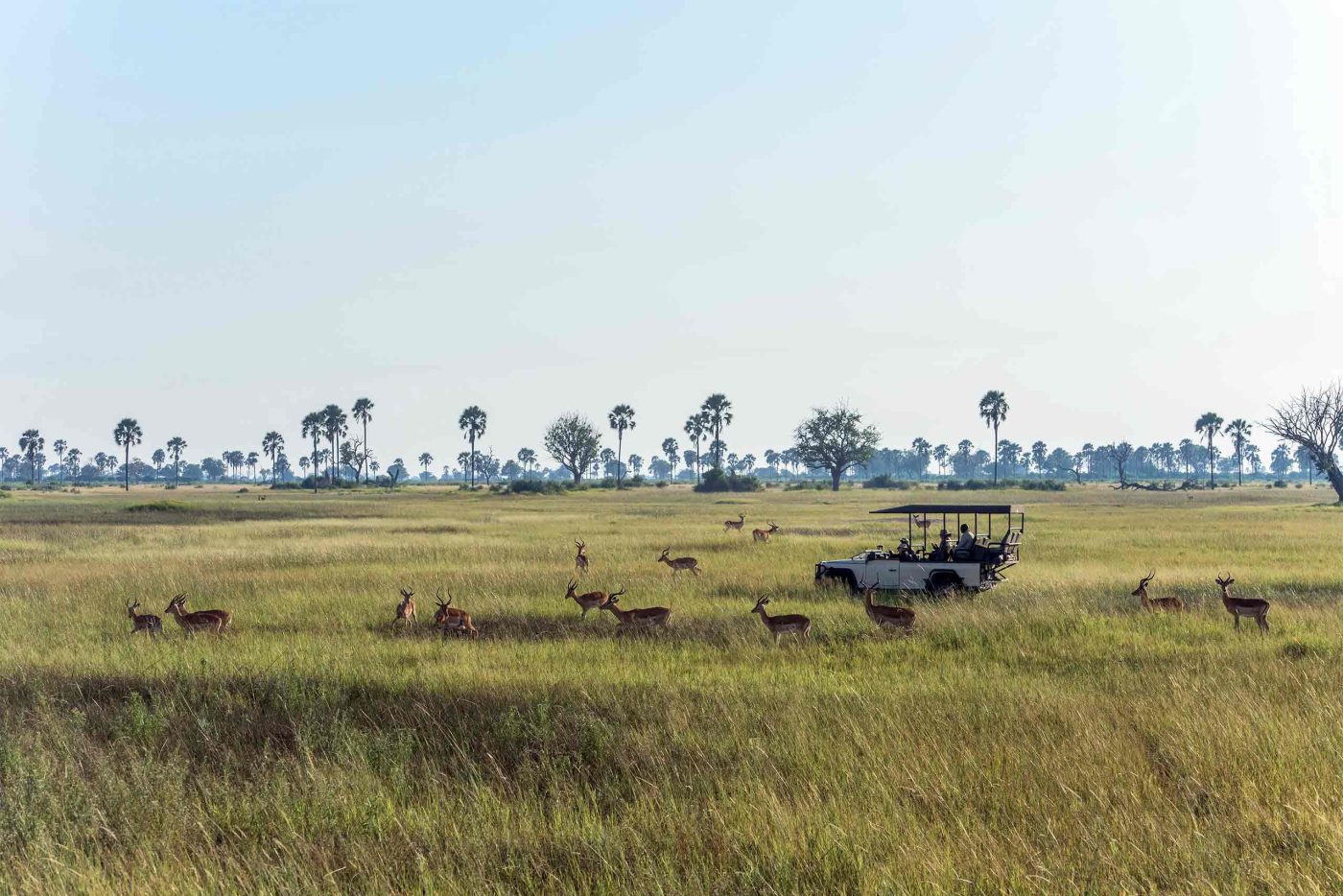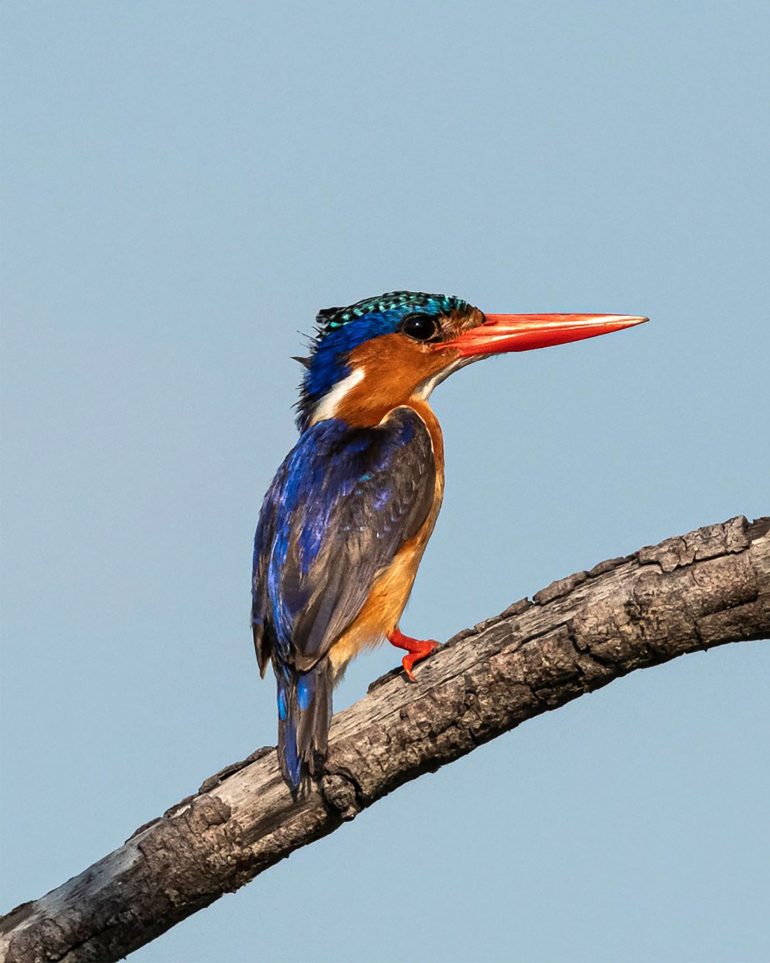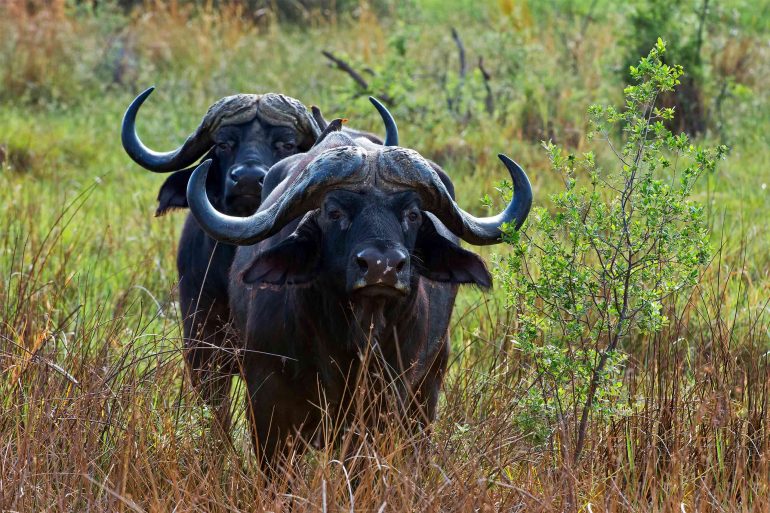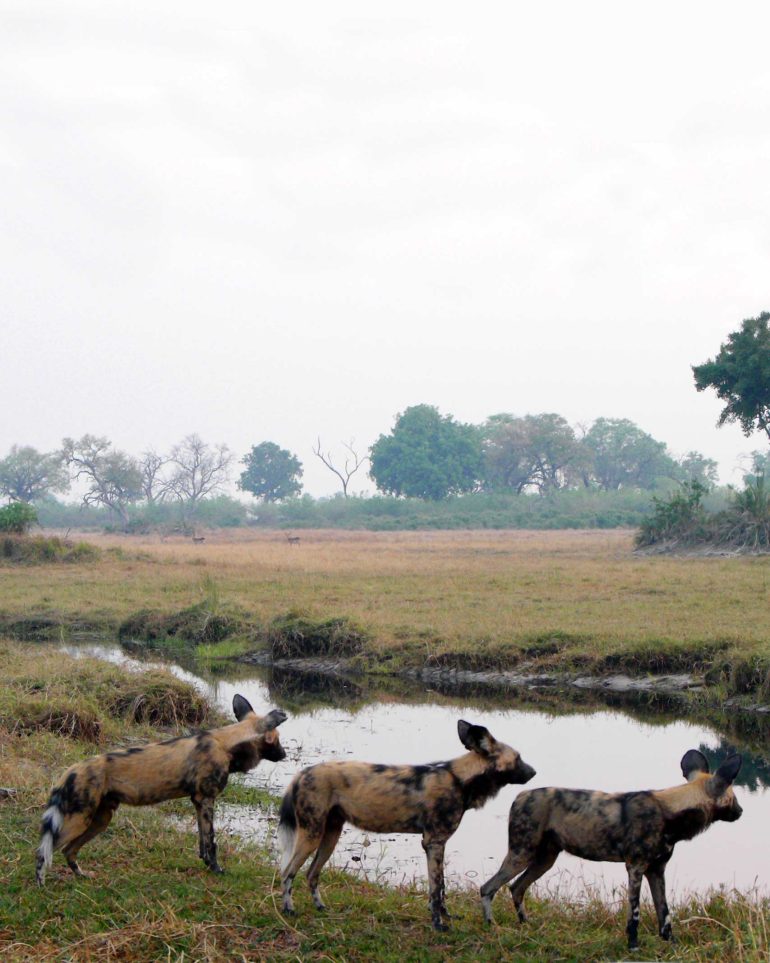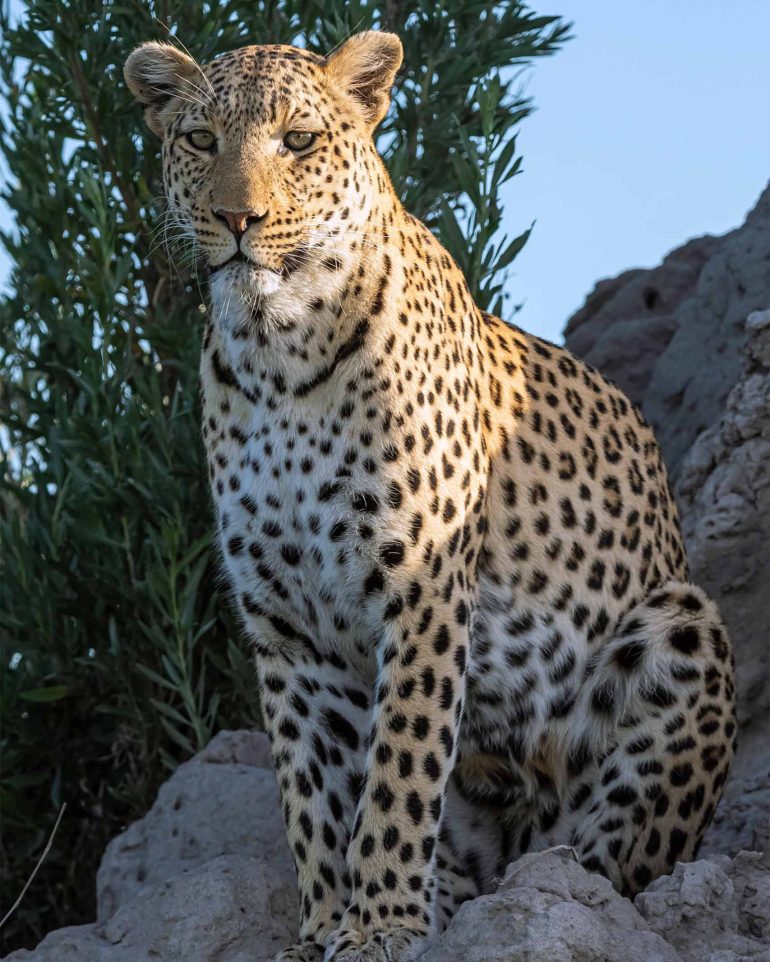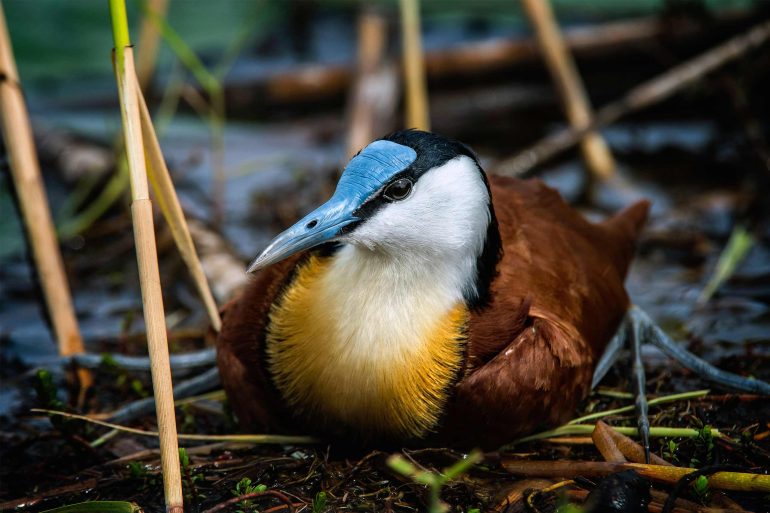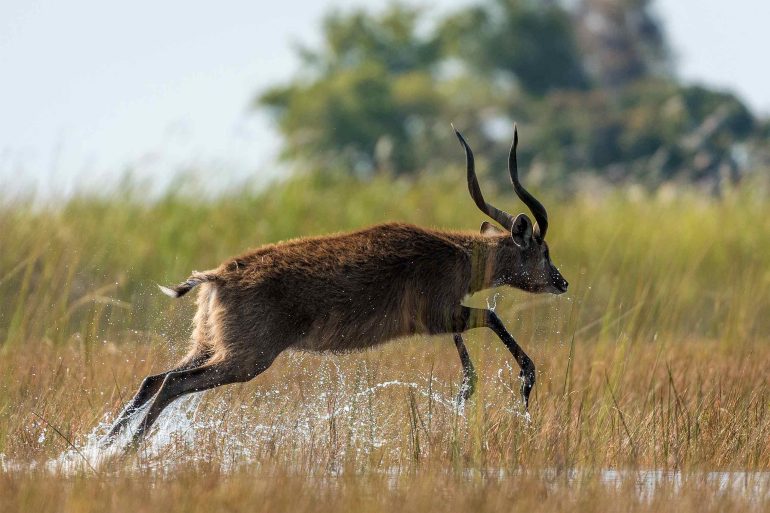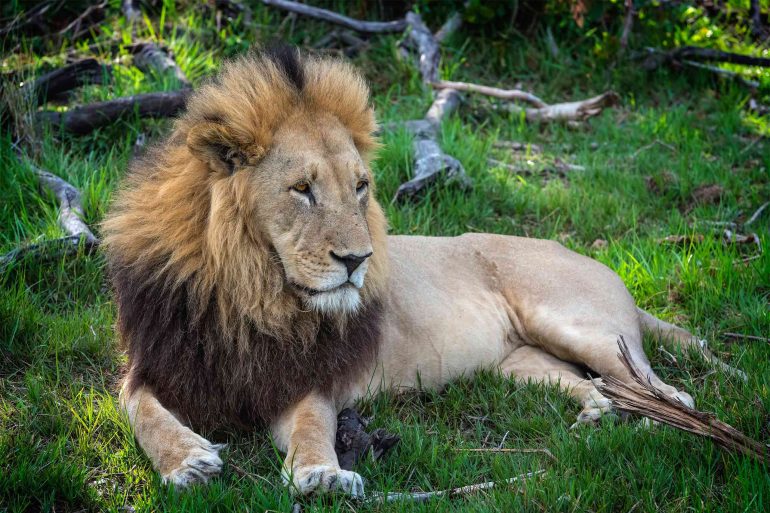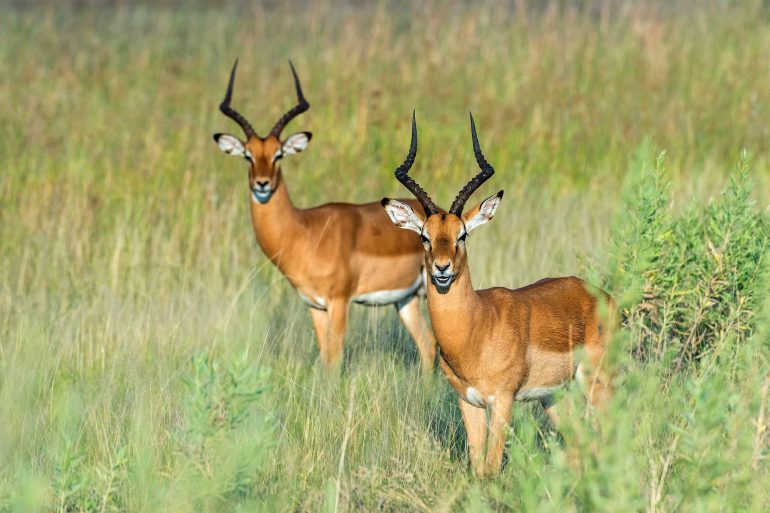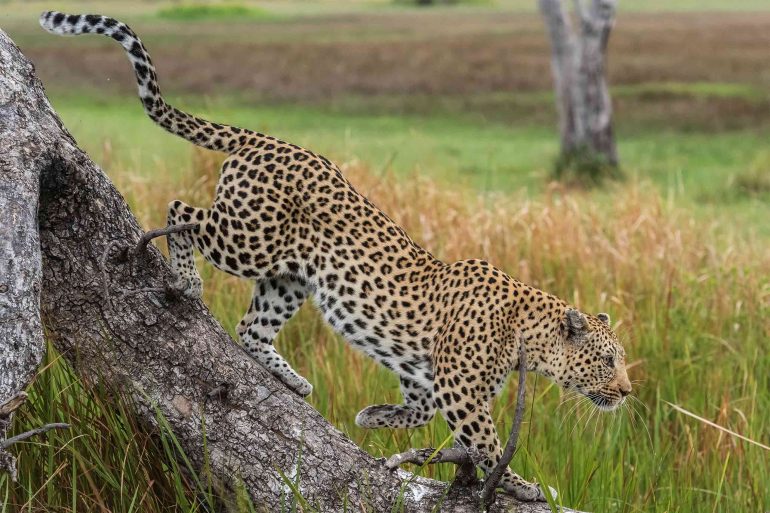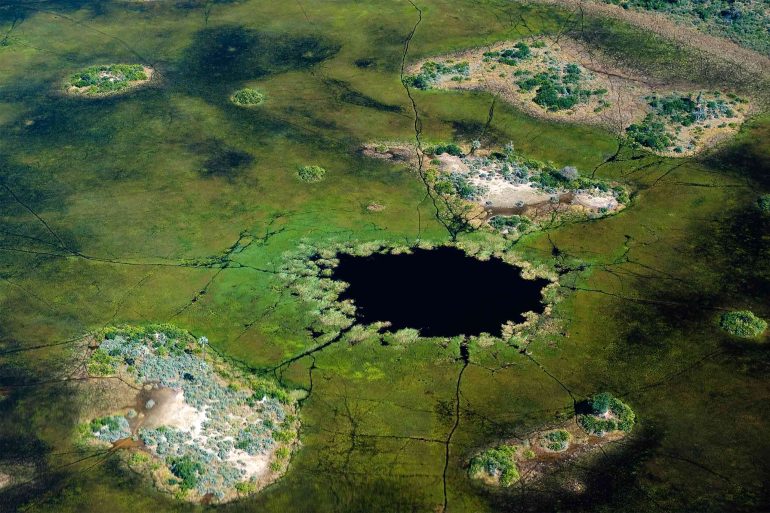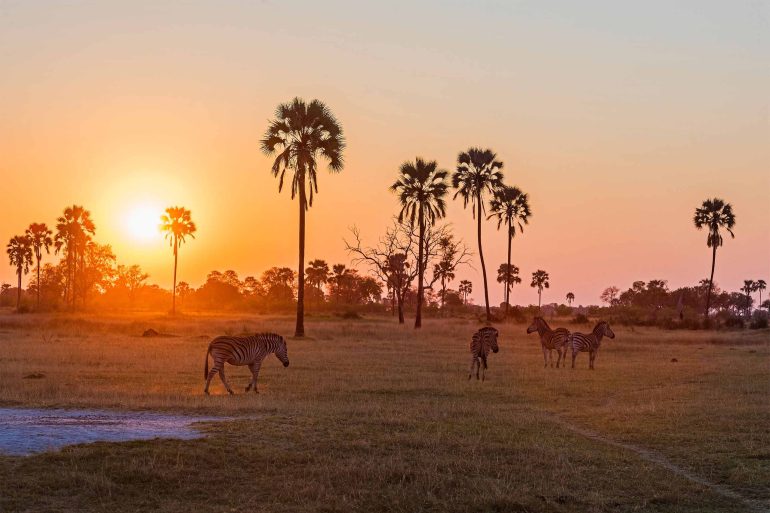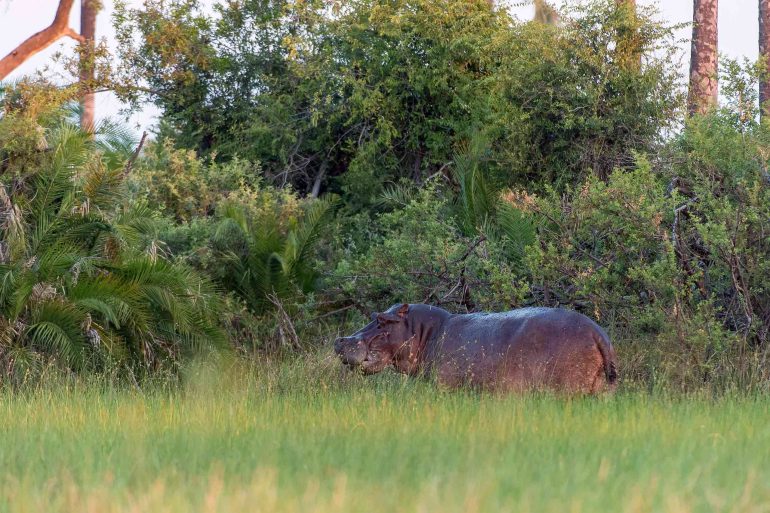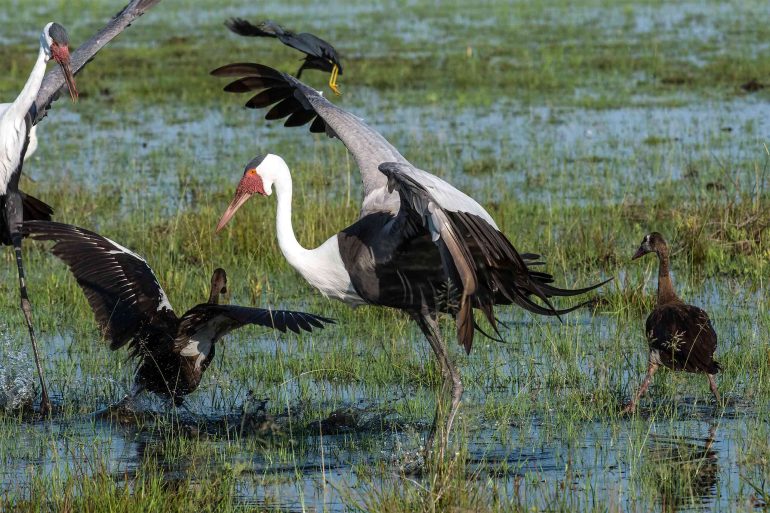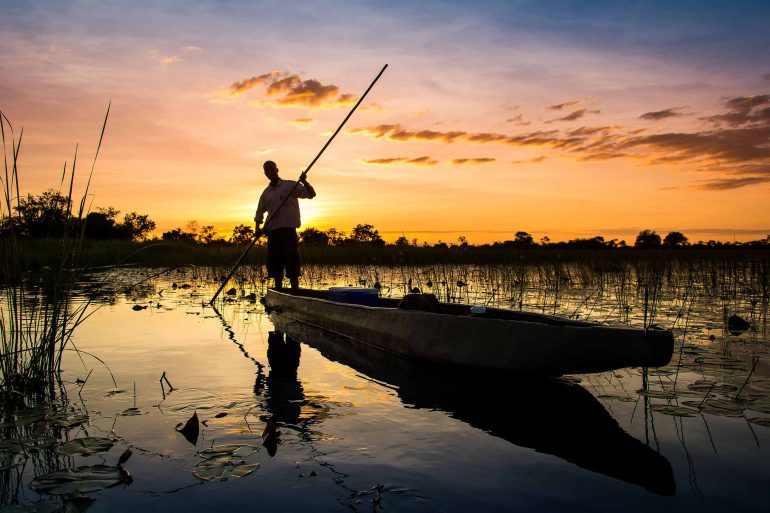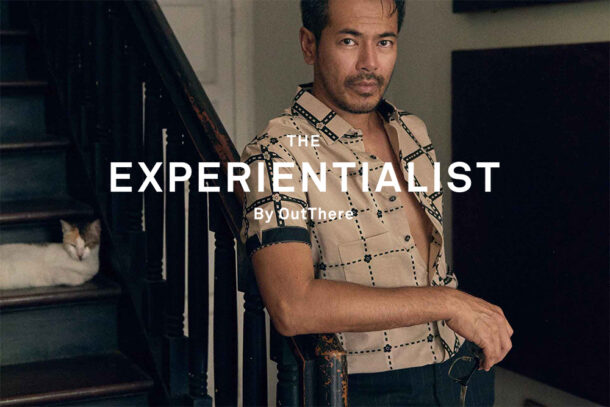Taking to the waters of Botswana’s famed Okavango Delta, we discover a world beyond imagination, where both wildlife as well as all the small plants and shrubs up to mighty trees dazzle the imagination. Everything in the Moremi Game Reserve seems almost ‘made up’, but the impact our visit makes on us is very real indeed.
Edward Lear, the Victorian-era poet famous for literary nonsense such as The Owl and the Pussy-cat, couldn’t have made the Okavango Delta up if he tried.
This part of Botswana is like nowhere else we’ve ever visited: a whimsical waterworld of ‘entomological skyscrapers’ – termite mounds – set among an unconventional forest of mokolwane. These odd-looking palm trees once travelled 600 miles/nearly 1,000km downriver from coastal Angola. Many are old and tall, others are just saplings, but few these days make it to mid-height, thanks to the 100,000-plus African elephants whose habitat this now is. They’re everywhere we look and they have an appetite for palm fronds. Other waggish flora in this mystical botanic garden include plants that sound as if they’re straight out of Lear’s poems – sausage trees, feverberries, knobthorns, leadwoods, and – just one – one solitary, ancient baobab tree.
The animals in the Moremi Game Reserve are no different. We watched as endangered ‘painted’ African wild dogs howled in delight as they disembowelled a swamp-loving sitatunga, a clumsy-looking antelope with splayed hooves. Narrowly escaping the same fate was a herd of six impala – standing in a row, their unique backside markings spelt out ‘MMMMMM’. Striking red lechwe lingered nearby, unafraid, even when their bright chestnut colouring caught the eyes of predators. A saddle-billed stork, with its bright yellow, red and black beak resembling the German flag, flew overhead. A marabou stork croaked loudly, as if feeling forlorn because of its more elegant cousin’s presence. Vultures circled with bloodlust and hyenas cackled in the distance. Two smirking warthogs wiggled their backsides in unison. We were fortunate to spot four of what are known as the ‘ugly five’. We also saw in abundance three of the ‘big five’ – elephants, buffaloes and lions – which are the draw for many people to come to Africa on safari.
From our sleek game boat, we were told that we’d mistaken methane gas bubbling in the water for a submerged hippo, only to be surprised as a giant one hastily emerged and scarpered like a dinosaur through the water, revealing his pod of family members behind him. They dipped their eyes in and out of the water, as if playing peekaboo.
It wasn’t all kooky, mind. From our punted mokoro canoe, we glided quietly through the delta’s narrow channels among vibrant waterlilies, experiencing the Okavango from a beautifully unique perspective. Our guides regaled us with stories of growing up in the area. As they did so, they were busily crafting necklaces and water-pistols out of flowers and reeds, just as they had when they were children. They laughed in glee when we couldn’t spot the tiny reed frogs and camouflaged amphibious monitor lizards that they could. They pointed out majestic water birds – herons, fish eagles, Pel’s fishing owls and the regal pied kingfisher. It’s this critter that give the lodge we were staying at its name – the local word for them is xigera, pronounced ‘kee-jera’. The guides also chaperoned us to surprise picnics and sundowners in the most stunningly picturesque of spots, all while keeping an extremely watchful eye on proceedings, as here guides are not allowed to carry firearms.
Uwern travelled with Rainbow Tours, experts in tailormade holidays into the heart of nature. The company offers itineraries of four or more nights at Xigera, including all meals and local drinks, activities and game drives. Part of their end-to-end service includes booking return international flights to Johannesburg and onwards to Maun, plus the short Mack Air transfer to Xigera’s own airstrip.
www.xigera.com | www.rainbowtours.co.uk
Photography by Uwern Jong and courtesy of Xigera


